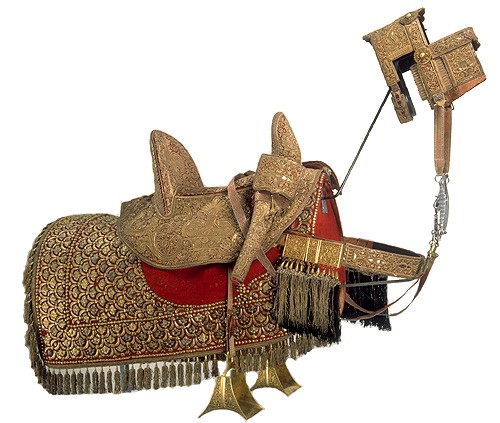On 21 July, 1798, the French army, led by the general Bonaparte fought a battle on the Gizeh plain against Murad Bey and his Mamluk troops. Renamed for posterity “the Battle of the Pyramids”, this episode in the Egyptian campaign soon became established as one of the key moments in the Napoleonic legend, particularly with respect to Bonaparte’s famous declaration: “Go with the thought that from the top of these monuments, forty centuries are looking down upon us” – which the 19th Century would transform into “from the top of these pyramids, forty centuries are looking down upon you” – and the famous confrontation with the remarkable Mamluks.
The term ‘Mamluk’, which means “slave”, shows the origin of these men, who were torn from their families and homes to become elite horsemen, sumptuously equipped and highly skilled at close armed fighting. First appearing at the beginning of the 13th century as defenders of Islam against the Mongols and the Crusades, the Mamluks took advantage of the progressive decline in Ottoman control over Egypt to impose themselves as a feudal class of lords. From their first encounter with the French troops, 13 July 1798, and despite their reputation, the Mamluk cavalry however had no success whatsoever against Bonaparte’s ‘squares’. Beaten back, the Mamluks retreated to Cairo, their defeat at the Battle of the Pyramids allowing the French troops to enter the town the following day, 22 July.
The Mamluk equipment and arms left on the battlefield was gathered up the day after the battle and offered by Bonaparte’s staff to Bonaparte. Three Mamluk harnesses, today held in the Musée de l’Armée (Paris), were part of that booty. This, the third of the group, is of a remarkable decorative richness, upholstered in red velvet and decorated across the whole surface with gold embroidery. The red cotton seat of the saddle is dotted with flowers interspersed with crescents and bordered with gilt copper studs. The principal parts of the harness, the steel bit and gilt copper spurs (which were so sharp that they could be used as weapons during charges) gave perfect control of the horse. In its magnificence, this harness is the very embodiement of the magic of the Orient which was to fascinate throughout the whole of the 19th century.
Karine Huguenaud (tr. P.H.)
October 2003


